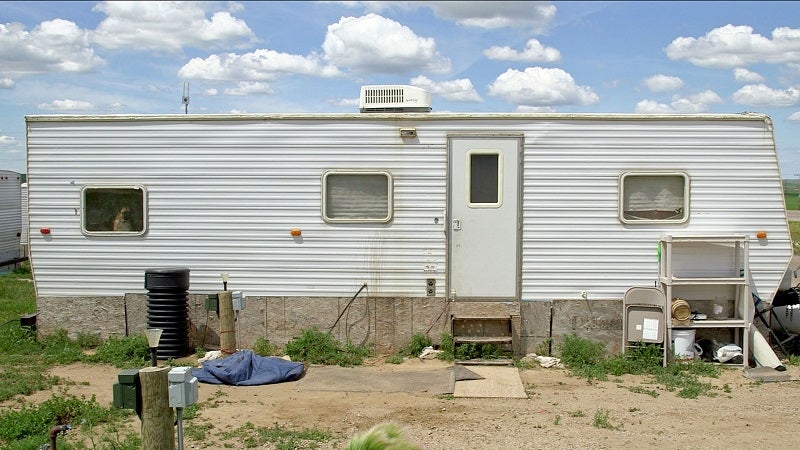Lawsuit Demands U.S. Restrictions on Formaldehyde in Wood Products
Groups claim EPA’s extension oversteps the agency’s authority and is illegal
Contact
Today, the New Orleans-based group A Community Voice and the Sierra Club, represented by Earthjustice, filed a lawsuit to require the U.S. Environmental Protection Agency (EPA) to stick to a firm and final deadline for compliance with the Formaldehyde Emissions Standards for wood products made, imported and sold in the United States.
The unlawfully-postponed standards limit the amount of hazardous formaldehyde gas that can be released from various types of wood products, including materials often used in emergency housing and inexpensive furniture.
Congress passed in 2009—and President Barack Obama signed in 2010—a law requiring the EPA to issue a final rule by 2013, limiting formaldehyde emissions from certain wood products, but EPA missed the deadline. Although EPA finally published the formaldehyde standards in December 2016, with compliance required one year later, the Trump administration recently extended the compliance deadlines by one additional year.
Today’s lawsuit was filed in U.S. District Court in San Francisco. It charges that the EPA’s extension oversteps the agency’s authority and is illegal.
Formaldehyde is used to bind plywood, particleboard and other wood products used in a wide array of consumer products, such as paneling, flooring, cabinets, furniture and recreational vehicles (RVs). It is a carcinogen that also causes or exacerbates respiratory ailments, and was blamed for numerous illnesses among Gulf Coast residents housed in travel trailers and mobile homes supplied by the Federal Emergency Management Agency (FEMA) after Hurricanes Katrina and Rita in 2005.
“It is outrageous that people recovering from this year’s hurricanes might have to deal with the same health issues in their emergency housing that the EPA has known about—and was supposed to address—years ago,” said Earthjustice attorney Patti Goldman. “It is long past time to put an end to cheap, imported wood products that needlessly make people sick.”
Members of Louisiana’s A Community Voice have witnessed these health problems firsthand.
“Formaldehyde is so dangerous for our health that A Community Voice is fighting to have it regulated more, not less,” said Debra Campbell, A Community Voice secretary-treasurer. “We believe that many of us have had harms to our health due to living in FEMA trailers after Hurricane Katrina, including my own mother’s suffering from COPD. We need more regulation of toxins, not less. Thankfully, Earthjustice is on the case.”
The Sierra Club has been involved with this issue for a decade, in dialogue with such groups as the Composite Panel Association and the nonprofit National Center for Healthy Housing to make California’s tough, state formaldehyde standards the federal requirement.
“It is completely unacceptable that the EPA is attempting to delay this lifesaving, commonsense rule that will protect families’ health and safety and create jobs here at home,” said Leslie Fields, director of the Sierra Club’s Environmental Justice and Community Partnerships Program. “The very last thing people who are recovering from natural disasters should have to worry about is whether their housing is making them sick.”
It is critical that the EPA no longer be allowed to drag its feet and continue to allow the use of dangerous wood products that harm people’s health.
Formaldehyde: A Toxic Timeline
2005: Gulf Coast residents displaced by Hurricanes Katrina and Rita begin reporting serious health problems linked to high formaldehyde emissions in travel trailers provided for emergency housing by FEMA.
2006: Indoor air quality tests by the Sierra Club of 31 of these dwellings in Mississippi and Louisiana find excessive formaldehyde levels in 96 percent of them.
2007: FEMA works with the Centers for Disease Control, which finds unsafe levels of formaldehyde in one-third of the FEMA trailers tested. FEMA adopts “Interim Direction on Use of Temporary Housing Units,” requiring that people who complain about formaldehyde-related problems be given other housing options rather than a replacement trailer.
2008: California adopts limits on formaldehyde emissions from wood products, to be phased in over the next several years.
2009: A report by the U.S. Office of the Inspector General details the problems getting FEMA to do its own tests and mitigate the complaints. Among the conclusions: “It is clear that the lack of a definitive, consistent, and well-promulgated FEMA policy resulted in some cases of problem trailers not being handled consistently.”
2010: Congress passes the Formaldehyde Emission Standards for Composite Wood Products Act of 2010, requiring the EPA to adopt California’s formaldehyde emission standards for wood products. Congress directs EPA to require compliance with these standards in 2013, along with provisions for testing, labeling and enforcement.
2016: In July, the EPA signs—and in December, it publishes—the new rule. The rule’s effective date is Feb. 10, 2017, with compliance required for most wood products by December 12, 2017.
2017: The EPA delays the rule’s effective date until May 22, 2017. In late September, EPA extends the compliance deadline for a full year, so that compliance will not be required until December 12, 2018.

Additional Resources
About Earthjustice
Earthjustice is the premier nonprofit environmental law organization. We wield the power of law and the strength of partnership to protect people's health, to preserve magnificent places and wildlife, to advance clean energy, and to combat climate change. We are here because the earth needs a good lawyer.